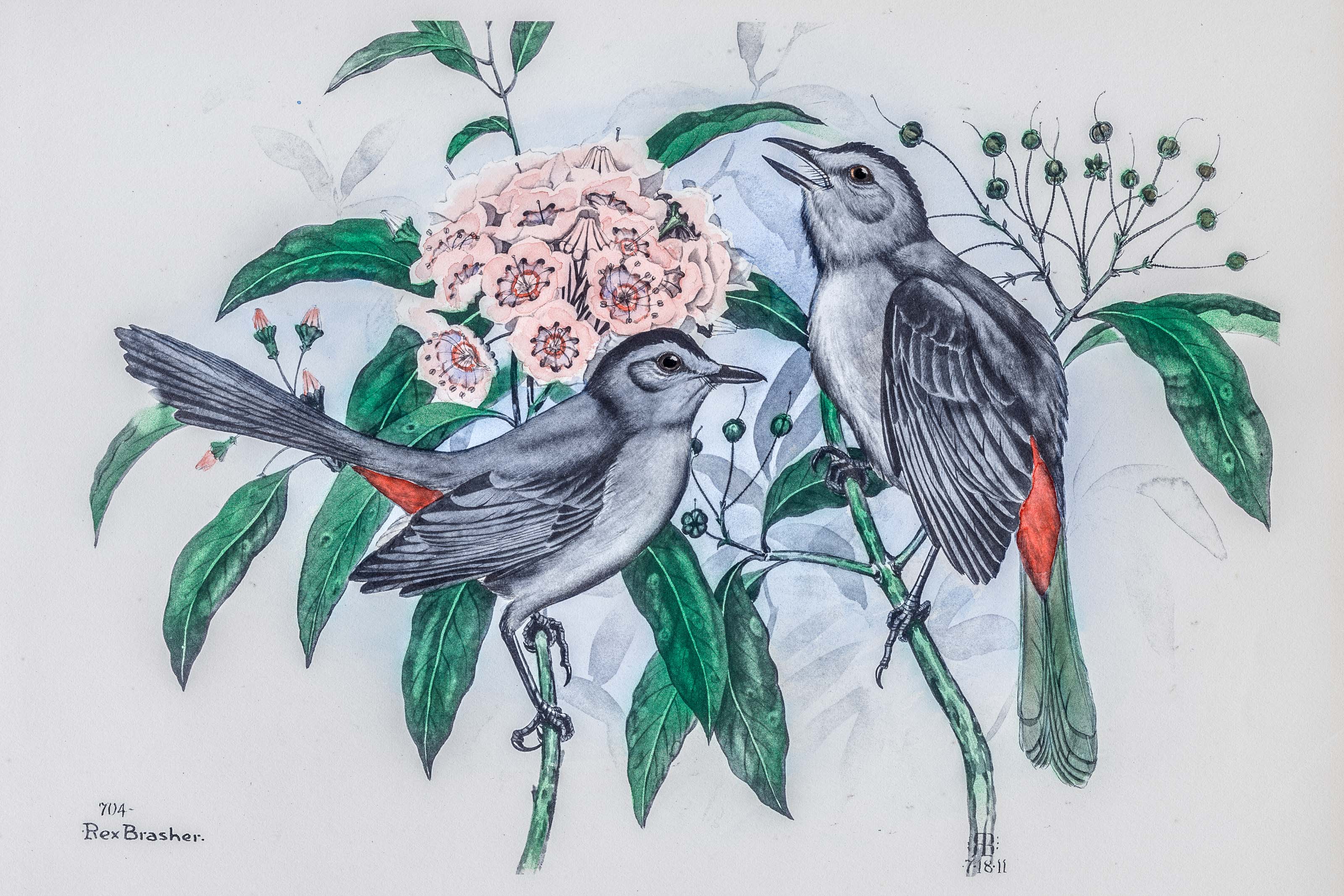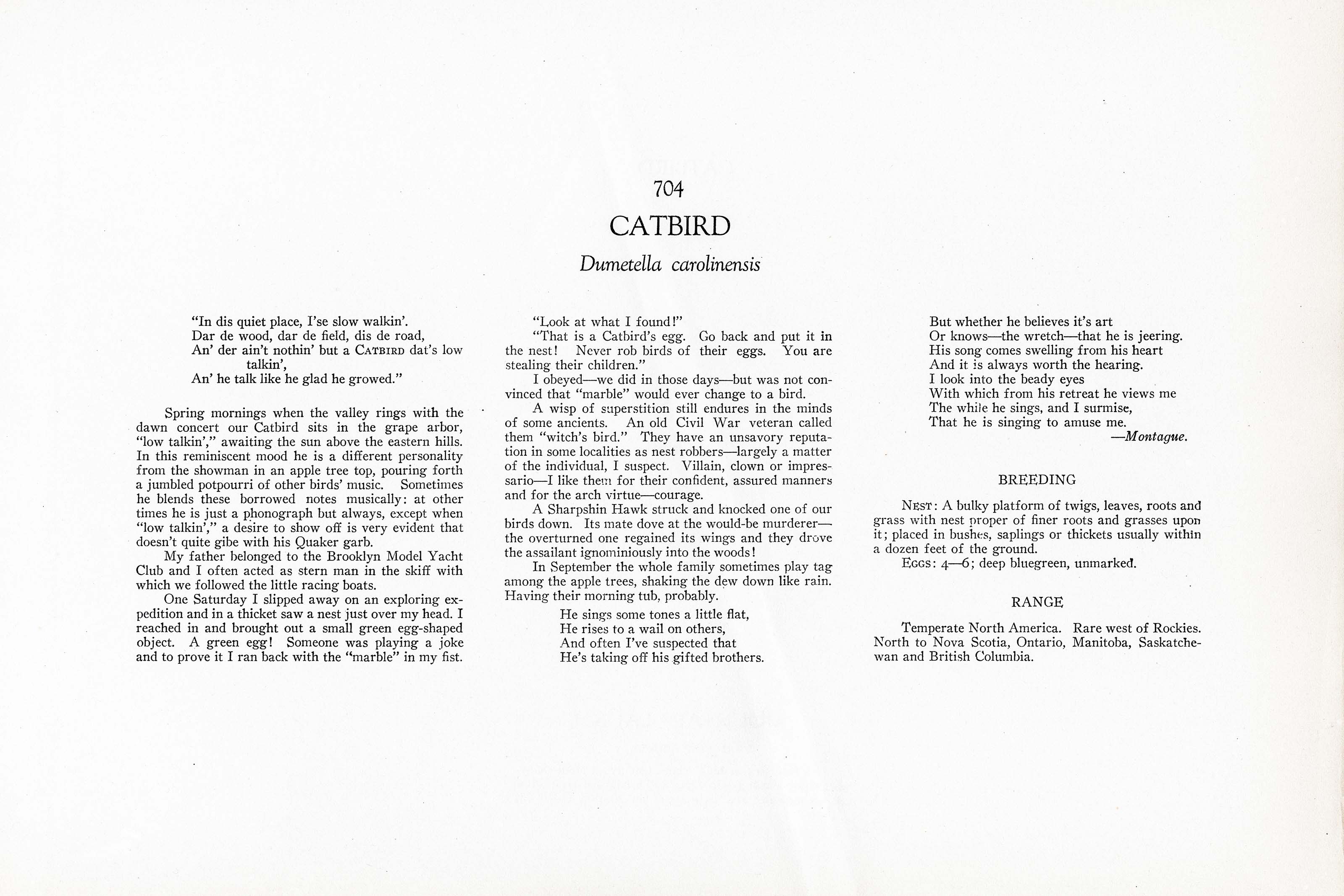






1911
1930
11
704
A team of dedicated board members, volunteers, and student interns has published every page in Volume 9. This volume includes 360 images of paintings and lyrical descriptions of birds, now available online for everyone to enjoy anywhere in the world. This is a monumental task. Each volume requires approximately 400 hours to photograph, edit, transcribe, catalog, and publish online. We need your support to complete this work.
If you're tech-savvy, have a good eye, are meticulous with details, and love structured data, please consider volunteering by emailing us at hello@rexbrasher.org.
We encourage all bird lovers and supporters to consider a monetary donation to support our mission to make Rex's work available for everyone. You can provide a one-time or recurring donation online.
"In dis quiet place, l'se slow walkin'.
Dar de wood, dar de field, dis de road,
An' der ain't nothin' but a CATBIRD dat's low talkin',
An' he talk like he glad he growed."
Spring mornings when the valley rings with the dawn concert our Catbird sits in the grape arbor, "low talkin'," awaiting the sun above the eastern hills. In this reminiscent mood he is a different personality from the showman in an apple tree top, pouring forth a jumbled potpourri of other birds' music. Sometimes he blends these borrowed notes musically: at other times he is just a phonograph but always, except when "low talkin'," a desire to show off is very evident that doesn't quite gibe with his Quaker garb.
My father belonged to the Brooklyn Model Yacht Club and I often acted as stern man in the skiff with which we followed the little racing boats.
One Saturday I slipped away on an exploring expedition and in a thicket saw a nest just over my head. I reached in and brought out a small green egg-shaped object. A green egg! Someone was playing a joke and to prove it I ran back with the "marble" in my fist.
"Look at what I found!"
"That is a Catbird's egg. Go back and put it in the nest! Never rob birds of their eggs. You are the nest! stealing their children."
I obeyed — we did in those days — but was not convinced that "marble" would ever change to a bird.
A wisp of superstition still endures in the minds of some ancients. An old Civil War veteran called them "witch's bird." They have an unsavory reputation in some localities as nest robbers — largely a matter of the individual, I suspect. Villain, clown or impressario — I like them for their confident, assured manners and for the arch virtue — courage.
A Sharpshin Hawk struck and knocked one of our birds down. Its mate dove at the would-be murderer — the overturned one regained its wings and they drove the assailant ignominiously into the woods!
In September the whole family sometimes play tag among the apple trees, shaking the dew down like rain. Having their morning tub, probably.
He sings some tones a little flat,
He rises to a wail on others,
And often I've suspected that
He's taking off his gifted brothers.
But whether he believes it's art
Or knows — the wretch — that he is jeering.
His song comes swelling from his heart
And it is always worth the hearing.
I look into the beady eyes
With which from his retreat he views me
The while he sings, and I surmise,
That he is singing to amuse me.
—Montague.
NEST: A bulky platform of twigs, leaves, roots and grass with nest proper of finer roots and grasses upon it; placed in bushes, saplings or thickets usually within a dozen feet of the ground.
EGGS: 4–6; deep bluegreen, unmarked.
Temperate North America. Rare west of Rockies. North to Nova Scotia, Ontario, Manitoba, Saskatchewan and British Columbia.
A tree 30 feet high, but usually a stout many-branched shrub 4–10 feet. Distributed from New Brunswick to Lake Erie south to Florida and Gulf States.